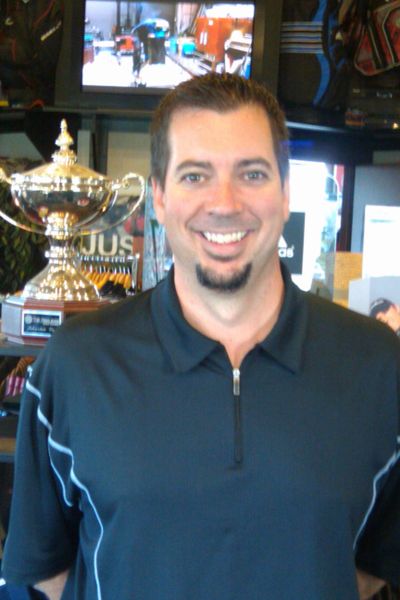Know a Pro: Chris Johnston
Highlands Pro loves to teach, compete

Chris Johnston, Head Professional and General Manager at The Highlands since 2005, has 17 years experience in golf management and teaching in the Inland Northwest, including five years as First Assistant under Gary Lindeblad at the award winning Indian Canyon Golf Course in Spokane.
After turning professional and joining the PGA in 1993, Chris was a member of the 1996 and 2002 Inland Empire P.G.A. Cup Team and has held two course records over the course of his playing career.
Nominated in 1996 for P.G.A. Apprentice of the year, Chris studied golf swing dynamics under two-time PGA section and four-time PGA chapter Teacher-of-the-Year, Clint Wallman at the Clint Wallman Golf School. He became a certified club fitting specialist by the PING Karsten Manufacturing Corporation in 1997 and Titleist in 2002.
Chris has served on the Inland Empire P.G.A. Board of Directors and currently sits on the Tournament Committee, serving as chair in 2007 and 2008 and won the 2007 Merchandiser of the Year award from the Inland Empire Chapter of the PGA for Public Golf Courses.
Q: How does one cure a slice or a hook?
A: There are many ways a player may be doing something incorrect to produce a slice (ball moving severely from left to right for a right handed player) or a hook (ball moving severely from right to left for a right handed player). The error, among many of culprits, could be from their set up, backswing or forward path.
As this game is a very individual game, and every player different, the best way to cure a slice or a hook is to call your local PGA Professional and schedule a lesson. They have the knowledge and the know-how to remedy your situation in the best possible way.
Q: Is there such a thing as a “natural swing?”
A: Yes, I believe there is. I think it’s like any sport someone tries for the first time—some people are just “naturals.” If the person has good hand-eye coordination, they usually do very well in any sport with a stick and a ball. More athletic (used to hand-eye coordination sports) people pick up golf quickly.
I think that is also why we see so many professional athletes that take up golf. I started helping one of the Shock football players these last couple years who is very teachable and who picked it up very quickly; I attribute that directly to his athleticism.
Q: Do you also learn even more about the game when you teach?
A: Absolutely! The more I teach the more I learn. That’s the great thing about the game of golf. Whether you’re playing it or teaching it, golf is a never-ending game of learning.
Q: What motivates you to continue your pursuit of excellence in the sport of golf?
A: What motivates me is that I am always searching for the perfect round. The funny thing is that you can always go back and find something you could have done better that may have produced a better score. That is why I keep practicing and playing. It’s a game we work at but never master.
Q: When are you at your best in your game?
A: Every 75 years when Haley’s Comet flies overhead, the planets align and my chi is at one with the universe…just kidding! I am at my best when there is any sort of competition on the line. Whether it’s playing for a beverage after the round or playing in a large professional event, it’s the competition that puts me at my best.
Q: Where do you see yourself in 10 years?
A: Well, I see myself as a 48 year old happily married father of three still working at the game I love and have been trying to master since I was 15 years old, and hopefully close to a beach in the Caribbean. Oh well maybe that last part was a dream…
For information about the Highlands or to contact Johnson call (208) 773-3673 or visit http://www.gogolfnw.com/courses/the-highlands-golf-and-country-club/